When Peking Strikes: Duck and Cover. The Sweet and Sour Sides of Art and Entertainment
- Christian Hain
- Oct 13, 2019
- 12 min read
Updated: Apr 1, 2020
(Berlin.) Please, have a seat, make yourself comfortable, grab a cuppa green tea and a snack, Poodle, Siamese, or Black Bear maybe; everything’s good with that new liver of yours? – yeah, ha ha, that one won’t be protesting again so soon, oops, sorry, forget what I've just said, and follow me on a visit to three new exhibitions in Berlin that focus on Chinese art and artists (on those mighty Chinese investors, too?).
Anything goes in China, everything’s possible in the Middle Kingdom, everything except, well, human rights, civil liberties, freedom of expression, trifles. In art, we’re not fussy, or not in every instance, it feels at least as if the ever political, notoriously critical, do-goodie-good art world would stay remarkably calm when it comes to China, in this not differing from other branches of the global entertainment industry – be political, yes, but know, there’s a time and a place for everything. Always go for the easy targets, targets the mass media have identified for you, howl with the wolves and where you don’t find such allies - keep silent. Whatever you do, don’t bite the hand that feeds you... not in earnest. The politics of art would make a fascinating subject for a more thorough examination, there is this historically grown consent between artists and Western! collectors who for certain psycho-cultural motives enjoy to be criticized, and most important: buy what, and from those who, criticises them (proof how “normal” and “down to earth” they are, maybe even hidden shame and guilt not entirely unconnected to the last remains of Christian ethics, &ct.). But masochism is not Maoism and in China, the party expects your unconditional kowtow.
Do you follow the controversies “of our times”? Strange, this simultaneity of events: First the veteran party-poopers Trey Parker and Matt Stone broke the great wall of silence over growing Chinese influence in (not only) American media and entertainment, then the NBA did its best to prove them right in the Daryl Morey incident, and as if this wouldn’t have been enough, video game company Activision/Blizzard followed suit over a professional nerd supporting Hong Kong,... all in the space of a few days! The internet can be fun, sometimes.
Before of course, there were others bowing to China’s law, from Mercedes to Vans, Tiffany’s, Google, Marriott... an illustrious business club. There certainly is a thin line between respecting local customs on site, and submitting to those same rules back home where the public in general shares other views, and morals. Is it ok to censor employees for expressing their views on Chinese politics - outside China? Or adapting your global ad campaigns to avoid topics that are regarded "sensitive" in one, albeit most powerful (and not just economically) country? Maybe, companies doing business with and in China should better set up "umbrella" companies to - oh, wait... Are regional differences in free speech regulation even possible when every opinion can be shared online, and everyone’s approach is global (what about regionally differing opinions themselves)?
"Well, you know what they say: ‘You gotta lower your ideals of freedom if you wanna suck on the warm teat of China’" (South Park: Band in China; the episode that earned Parker/Stone the hoped-for honour to see every mention of the show banned behind the Great Firewall). In art, we savour every single drop pouring from that precious source. It’s long become commonplace how every gallery needs its token Chinese artist to keep the dream alive of a new origalch stopping by on another flipping spree, the market powerhouses opened shop in Shanghai, Peking or Hong Kong years ago already (those who chose the latter location might be reevaluating their strategic decisions now), while museums, collections, and art spaces won’t lag behind.
Back to Berlin. Confucius says: “Let’s stalt at Stoschek’s”. JSC, Julia Stoschek Collection, shows works of Wangshui, and I’d better spell that out for you: W-A-N-G-S-H-U-I, not F-E-N-G S-H-U-I – common mistake, happens to everyone. Wangshui is a New York based artist collective with roots in China. Untypical for anything Chinese these days, the show is not sensationally huge, but rather modest with hardly more than a handful of works. Plastic shower curtains separate the different rooms, and emanate a distinct smell that will Proust-ically send you back to childhood, unwrapping a new action figure (strange, just experiencing a déjà écrit – have I written the exact same phrase somewhere else before?!), made in China - they don’t outsource to their new African properties yet. In the beginning is video, an installation titled Garden of Total Exposure, and that doesn’t continue “of Your Life, Body and Mind, to Party and Government”, projected to the four walls. Upon first look, it seems only technical but after a while, you distinguish movement in the laboratory scene. Proceed past other visitors to the centre of the room, and discover the physical installation that gets multiplied in film here: The artists built an uber-techy – and borderless, inhabitants are free to leave and roam around, in theory at least – habitat for oh so many (and don’t you say: "they all look the same!”) squirming, yellowish, silkworms. Good to know: PETA hasn’t protested the installation yet.
The concept seems obvious: We find China with its gigantic population captured between present and past, between the historic silk road and a new one they’re currently establishing. As the show continues, eventually worms will evolve into moths, when it will be time for visitors to save their skin, or woollen winter sweaters at least (no, wait, that joke doesn’t work: only larvae feed on clothes). With the cameras tracking every movement, it‘s about “all eyes on China” too, the empire’s perception in the eyes of others. Apparently, there’s even a link to the Emperor’s private gardens historically carrying a similar name, until European invaders came and destroyed them.
Most visitors will pass through the adjoining part without addressing the... dragon in the room: a fake reptile skin curled up above the entrance. Those costumes come to mind, Chinese communities all over the world love to hide under during their New Year’s celebrations in spring, but also classic paper cuts. There’s further talk of “tentacles” and “hydro dripping technique”, but I didn’t really get that part.
Another room, another video: A drone keeps circling around a skyscraper of dimensions only the Chinese are still capable - still dare - to erect, not on a military mission, not armed with missiles – there already is a large gap in the building’s midst, and built in intentionally! No proof of a recent visit by Godzilla (that would be Japan anyway), but meant for “energy currents” to pass through – that’s the famous Qi? –, and the odd dragon indeed. Elsewhere in the world, we keep to pigeons, this might be all the difference. It’s considerate, yet not particularly unique even in regards to, let’s say: “less common animals” (we certainly don’t want to offend any self-identifying dragons*esses by doubting their existence!), think Icelanders (allegedly) building roads around elf and fairy inhabited hills, and still remarkable in the case of a hyper capitalist communist regime (two sides of the same, dehumanizing, medal, and both are falling together more and more rapidly). A voice from the off accompanies the images in English, sounding exceptionally bored.
A sculpture/installation, a waterfall of blinking neon lights, with light waves and indiscernible sounds, supposed to evoke “a kraken’s” – not dragon’s?! – “tongue”, and shards on the floor, and that’s it, folks, nothing more to see at JSC!
Off to the next show-ling temple (one more awkward pun, I’m so sorry): Micro Era - Media Art from China, and more futurist video installations.
Kulturforum still hides behind a construction site, all but obstructing your way to the entrance. On opening night, the guests brought – no, other way round: A local sweets company had prepared presents and not only for the Chinese invitees, but free to grab for everyone. The marzipan blocks were as tiny as tasty, you could either eat them or use them for building a not-so-Great Wall on the table while sufferi- attentively following! one more Berlin opening speech. Ah, forever those sweet dreams of selling big in China, and there were indeed many Chinese faces among the visitors (why, what? yes, of course, that’s another evil stereotype, they might have been thoroughbred German citizens, Americans, French, whatever, we’re all equal, all identities obsolete). One or another appeared to enjoy the treats, hopefully not that much to copy the recipe. Thinking about it, that sweets company could already be in Chinese hands, it would make sense too. (Having verified that: nope, Iranian-German ownership.)
The Mayor of Berlin, Mr. Michael Myers no: Müller, Michael Müller’s the name!, dropped by for an extra speech, adding to those of museum staff and Chinese community representative, but contrary to tradition, no exchange of brotherly kisses took place. Interestingly enough, he, or his spin doctors, chose this event over the night’s other big institutional opening, of a Bauhaus centenary show at Berlinische Galerie. That’s forward thinking indeed (and not limited to Fridays)! After all, this is about some anniversary too, Berlin and Peking celebrating twenty-five years of town twinning.
Not surprisingly given the title, Micro Era is all about video and “multimedia” art. The (I admit, often rather annoying) no-longer-Berlin-based Ai Weiwei is missing – no, not “again”, only from the show!, public Kulturforum deals with official China. Ever the professional, Nationalgalerie's leaving boss, Mr. Udo Kittelmann, betrayed no signs of discomfort when praising a “millennia old culture that has a lot to teach us”. Everybody’s free to imagine what he's meant by these words, and whom: police, military, organ transplanting physicians?
About art: Only four woks – works!, video works to be precise – upstairs, shown in a very dark environment. 1.) Fang Di, Minister, 2001: A Papuan-New Guinean politician is holding a speech at the opening of a redesigned local beach, that appears a little less interesting still than Mr Müller’s at Kulturforum.
2.) African Africans dance in African ways, not equal yet, but all the more different, and diverse. Rather not about the neo-colonization of Africa by state driven Chinese companies – Wait,... this could actually be Papua, too! You know: not African, or African-Papuan, but, well, easy now, your brain might explode, if you internalised the politically idiotic doctrine of calling every dark tainted person an African-Something, even if his ancestors left Africa at around the same time as yours, many millennia ago. That banned Latin expression at least had the advantage of being not that obviously wrong, but well, marketing again, change terms to change thoughts, which never works by the way. Are these dancers celebrating a successful headhunt? It's Fang Di again, The Magical of Pipes, 2019, and made in the same documentarian style, maybe I'm getting this now.... Residency? With obligation to produce a certain number of artworks relative to Papua?
3.) Scenes from a factory, very possibly Chinese, and very possibly assembling the gadgets, millennials around the globe cannot live without, products that are exported to America and Europe, climate-neutrally of course. Of course. During a break, labourers (male/female/dunno) perform a robotized choreography to trashy (Western?) pop music.
And, 4.) more worker comrades passing through a security check, this could be everything, from an amazon/AliBaba storehouse to Foxconn – or not, because that would be Taiwan, or “Chinese Taipei”, or “China, not Red China” (General Chiang Kai-Shek likes this), or something entirely else. It’s anonymous, it’s exchangeable – it’s contemporary.
The comrade Cao Fei (or Fei Cao?) is responsible for both latter videos. Kulturforum, we learn, invited her first, the a little elder (Confucius says: “Honour the elders”!) and potentially more famous artist - in modern Chinese terms, that’s “better selling” -, she then chose Fang Di to be her padawan. For the sake of the work-life/beach/dance balance? According to official documentation, Fang Di treats topics of “racism and discrimination”, there are indeed important Chinese business interests in Papua!, whereas Cao Fei’s work focuses on "mass production" and the long technological march.
Follows a single work by Zhang Peili in the staircase. For its presentation alone – a prehistoric tube TV! – that doesn't really reflect China's big leap forward, it could remind you of the one work of Asian Video Art we all know - no, not Hentai Kamen, the other one: Nam June Paik’s TV Buddha (1975). Dating itself from 1988, Peili’s film features the artist squatting on the pavement, Chinese style (aargh, did it again: those evil stereotypes...), and smashing a mirror. Smashing the image*s of China, presumably. That was one year still before nothing ever happened on Tiananmen Square.
The following, second main, part is mostly about video games and – Japanese or Korean? - manga/anime culture (for the elderly: that’s Asian/cool lingo for “cartoons”). Lu Yang uses the imagery to spread his/her/its message of gender streamlining, among other things, but this we knew already: “they” know how to copy and paste, now hip Western discourses too. Really, sweetie: Nobody cares, even if you identify as a Panda, it all too often being the only thing you desperately hope will make you interesting in any way soever (think, I’ve been lurking too much on r/roastme recently?). Not even starting to discuss why for example a man would want to be a female, when at the same time we're told over and over again, how there is no such thing as "male" and "female", but only evil societal constructs. Modern arithmetics: One gender is more than two sexes, more efficient in any case.
More works of Zhang Peili deal with the “history of contemporary art in China”, the artist having counted among the earliest examples himself. We’re invited to open either door of a small double cabin with a wall separating both parts - yes, go ahead, do it, it’s allowed! -, and find a mirror and camera inside. Then see images recorded here, or on the other side, earlier.
And for the happy ending: Martin Gropius Bau. Let’s get a little more blog-gy here still: Throwback to early September, and Berlin Art Week (full disclosure: that Stoschek show was also another stop on that preview tour). Martin Gropius Bau hosted BAW*S’ opening press conference which I thought came in very handy, as the week before, I had made a mistake in noting three previews for the same Wednesday morning, among these chose Berlinische Galerie, attended Kulturforum’s public opening in the evening, and completely skipped on MGB. As it turned out, MGB’s invitation had been for the day before, when I visited... nothing at all. All this won't be of any interest to you, I am perfectly aware, but can you at least understand my hopes to profit from BAW*S' press conference for a look at the third autumn show of an artist with ties to China? They had even announced, it would be possible to see the only half-finished Walking Through Walls, and I further verified with somebody in BAW offices by mail, who appeared almost annoyed about the superfluous request: They were open, so obviously it should be possible to visit Wu Tsang. Knowing MGB, I wasn’t so sure. Doubts became reality when that Monday morning, I first found my name absent from the list of pc attendees (despite that and several other emails with BAW’s press office, but don't worry, it's no big deal, not like if it were the guest list of some club), then, there being still a good half an hour time, the desk interns appeared very surprised about my demand. Still, they sent me up those stairs – visiting MGB multiple times a week should be the best preparation for Berlin Marathon – only to meet my peril in person of a warden watching over Wu Tsang. KO in the first round, and I could not even land one punch. Nobody had deemed it necessary to tell her about any press thing happening in the basement that day. So much for the plan...
Now Wu Tang, Wu Tang, watch out for those killah beez, n---z! Oh no, wait... Wu Tang Clan, the 1990s NYC Rap Collective, has nothing to do with Wu Tsang, the artist, at all. My bad. To tell it right away, I never visited the show... which won’t prevent me from talking about it. That’s nothing absolutely uncommon in (art) journalism, trust me, but to my, and certain colleagues', defence: there are press releases and complimentary press visuals to provide you with a general idea of the show. In this particular case, they did not convince me to spend €15 (not a typo, that’s MGB... still not offering one-show-only but only full-access tickets). Wu Tsang brings more of the same, nothing Chinese in particular, but Western gender troubles, the usual self help trauma literature in visual arts disguise. For a second topic, the show treats immigrants, and not to China, but to Europe: Documenting those who, contrary to Fang‘s Papuans, chose to abandon their home and culture, and left for the promised land: Europe. Considering that,... the Chinese landgrab in Africa could actually stop the Völkerwanderung: Is not every migrant an argument for re-colonisation, his great-grandfathers having sacrificed their lives and those of their families to get out of Europe, to no longer live under European rule, whereas their descendants are doing the exact opposite?
Wu Tsang is an American-Chinese artist dividing his/her/its life between LA and Berlin, the show's title “There Is No Non-Violent Way to Look at Somebody”, to which you might reply either of the following: a) “Yes, there is.” b) “Yeah, um-hum, right, the very act of opening one’s eyes and consuming external impressions is a paternalist, capitalist, invention of evil white men, part of their master plan to subdue the world, because.” Or c) “Then don’t” (shrugs, and moves on).
It seems like a perfect example of “political-non-political” show, exclusively repeating the same fashionable slogans everybody else is shouting anyway, now where's the risk in that? Not exactly a cultural revolution.
Free Tibet.
Wangshui, Horizontal Vertigo, 12 September-15 December Year of the Pig, Julia Stoschek Collection Berlin
Micro Era - Media Art From China, 05 September-26 January Year of the Pig, Kulturforum
Wu Tsang, There Is No Non-Violent Way of Looking at Somebody, 04 September-12 January Year of the Pig, Martin Gropius Bau
World of Arts Magazine - Contemporary Art Criticism

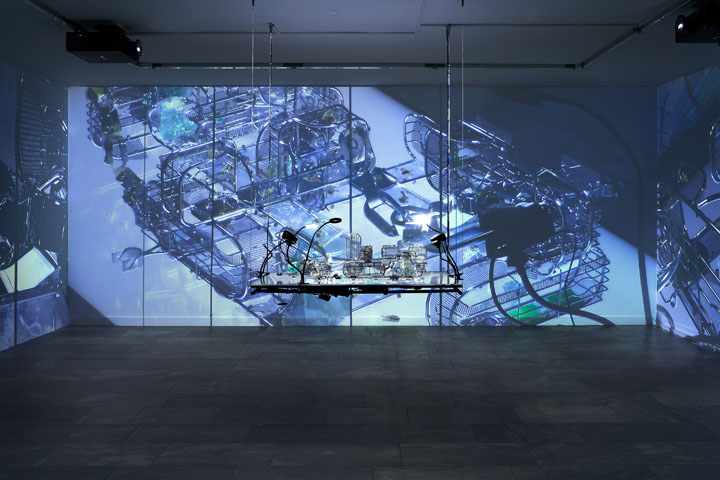



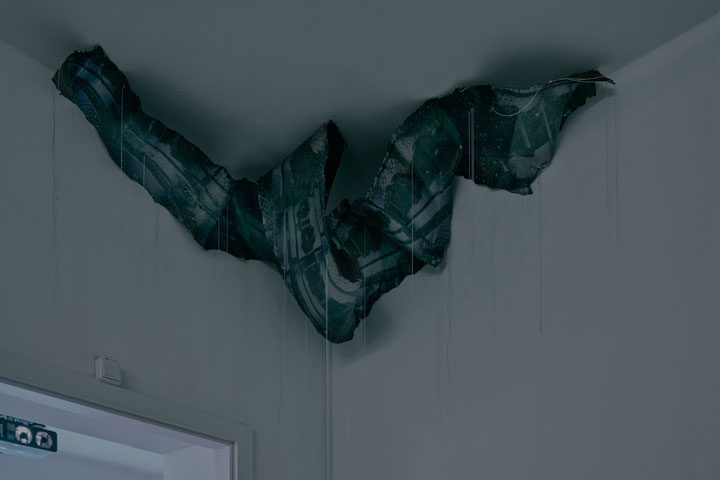

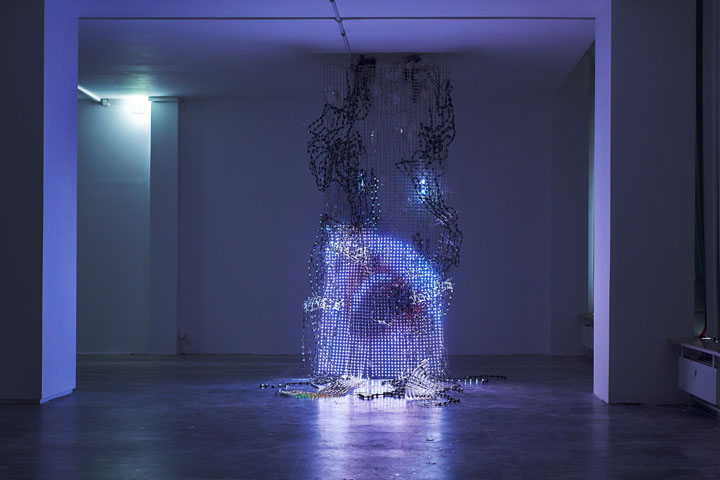



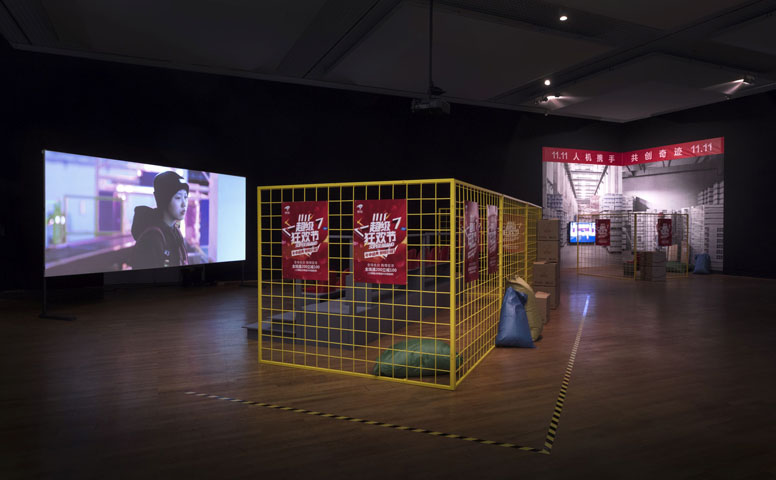

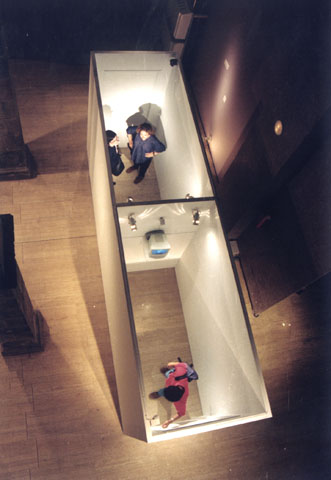

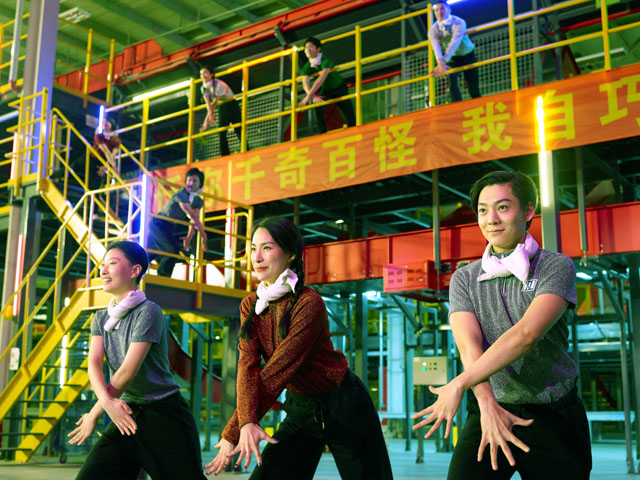
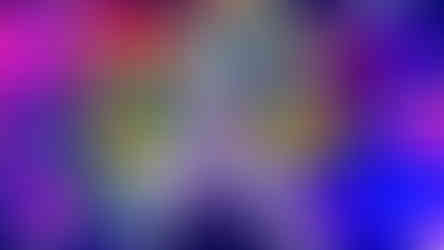


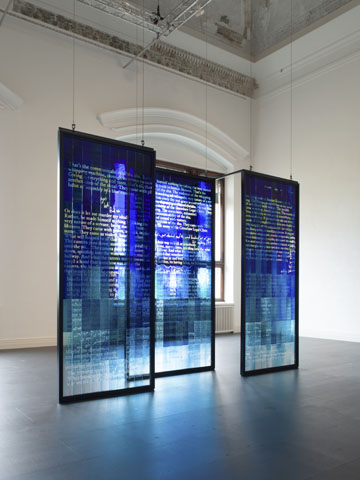
Comments